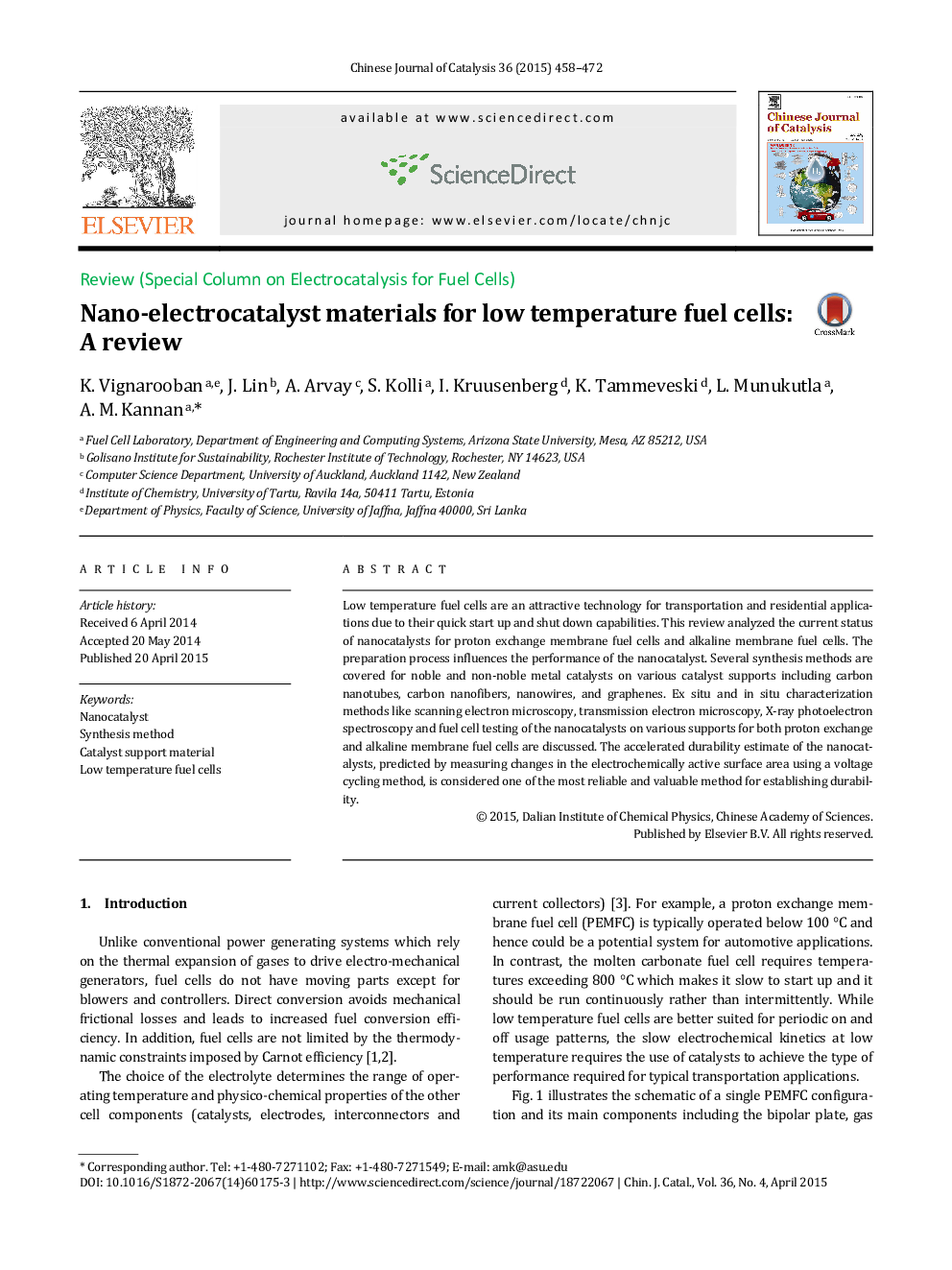| Article ID | Journal | Published Year | Pages | File Type |
|---|---|---|---|---|
| 58970 | Chinese Journal of Catalysis | 2015 | 15 Pages |
Low temperature fuel cells are an attractive technology for transportation and residential applications due to their quick start up and shut down capabilities. This review analyzed the current status of nanocatalysts for proton exchange membrane fuel cells and alkaline membrane fuel cells. The preparation process influences the performance of the nanocatalyst. Several synthesis methods are covered for noble and non-noble metal catalysts on various catalyst supports including carbon nanotubes, carbon nanofibers, nanowires, and graphenes. Ex situ and in situ characterization methods like scanning electron microscopy, transmission electron microscopy, X-ray photoelectron spectroscopy and fuel cell testing of the nanocatalysts on various supports for both proton exchange and alkaline membrane fuel cells are discussed. The accelerated durability estimate of the nanocatalysts, predicted by measuring changes in the electrochemically active surface area using a voltage cycling method, is considered one of the most reliable and valuable method for establishing durability.
Graphical AbstractLow temperature fuel cells have gained momentum for transportation and portable applications due to their higher power density and ability to start instantaneously. This review gave the current status of their nanocatalyst materials.Figure optionsDownload full-size imageDownload as PowerPoint slide
